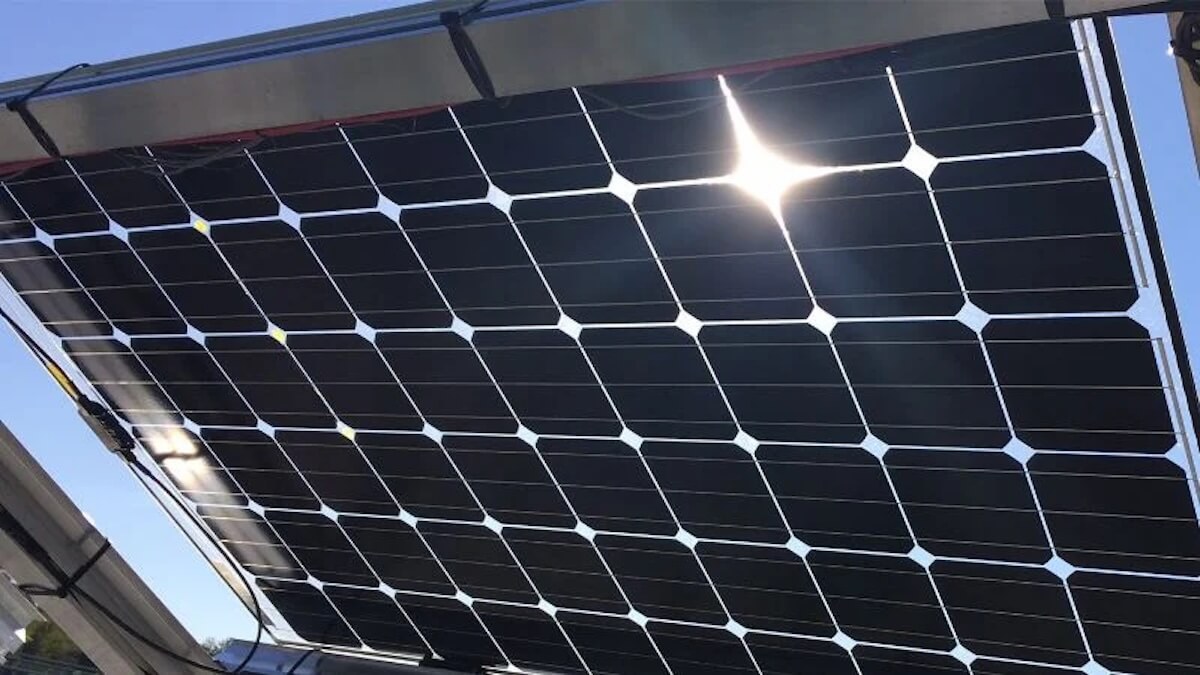The article Bifacial Solar cells: Transparent electrode increases the efficiency of Felix Baumann first appeared on Basic Thinking. You always stay up to date with our newsletter.

Bifacial perovskit solar cells use light from both sides to create electricity. Thanks to a new transparent electrode, researchers have now significantly increased their efficiency.
Researchers of the Indian Institute of Technology (IIT) Dharwad recently made progress in the development of bifacial perovsky solar cells. Such modules use light from both sides, which significantly increases their efficiency compared to conventional solar cells. By developing a new, transparent electrode based on a NIO/AG/NIO structure, the scientists were able to significantly increase the performance and durability of these cells.
While classic solar cells absorb light from one side, bifacial solar cells can use direct sunlight, reflected light from the floor and diffuse light from the surrounding area. This technology enables higher energy yield. It makes the solar cells particularly efficient for use in the field of agrivoltaics, building facades and vehicles.
Bifacial perovskit solar cells convince with a higher efficiency
The researchers use a thin, transparent electrode with a three-layer NIO/AG/NIO coating. This electrode has two advantages. It has a particularly low electrical resistance and leaves a lot of visible light. This leads to an improved light absorption and a higher efficiency.
In tests, the new bifacial perovskit solar cells showed a power conversion efficiency (PCE) of 9.05 percent on the front and 6.54 percent on the back. In addition, they were able to maintain 80 percent of their original efficiency over more than 1,000 hours without additional protective measures.
This underlines their high durability and stability. Another advantage is the infrared transparency of the solar cells, which makes it usable for special applications such as heat windows or optoelectronic devices. Due to its thin construction of less than 40 nanometers, integration into building-integrated photovoltaics (BIPV) or tandem solar cells is significantly easier.
Approaches increase the diversity of photovoltaic systems
According to Professor Dhriti Sundar Ghosh, one of the leading researchers of the project, the technology could make an important contribution to the further development of tandem solar cells, agrivoltaics and solar cells for vehicles. Due to their high transparency, resilience and on both sides, these solar cells are considered a promising alternative to existing technologies.
If research is making progress, Bifacial Perowskit solar cells could play an important role in future energy supply. They should help use renewable energies even more efficiently – regardless of the area of application.
Also interesting:
- China builds “large solar wall” with an output of 100 nuclear power plants
- Half leader of the century: Halogenid-Perskit should make solar cells cheaper
- Network overload from photovoltaic systems? Solar association cleans up with myth.
- German researchers develop tandem solar cells with record efficiency
The article Bifacial Solar cells: Transparent electrode increases the efficiency of Felix Baumann first appeared on Basic Thinking. Follow us too Google News and Flipboard.
As a Tech Industry expert, I am excited about the potential of bifacial solar cells with transparent electrodes to increase efficiency. By allowing sunlight to pass through the front of the cell and be absorbed by the rear electrode, these cells can capture more energy and generate more electricity.
This innovation could significantly boost the performance of solar panels and make them even more competitive with traditional energy sources. The transparency of the electrode also opens up new possibilities for incorporating solar cells into architectural designs, windows, and other surfaces where aesthetics are important.
Overall, I believe that bifacial solar cells with transparent electrodes have the potential to revolutionize the solar industry and drive further adoption of renewable energy technologies. I look forward to seeing how this technology continues to evolve and contribute to a more sustainable future.
Credits